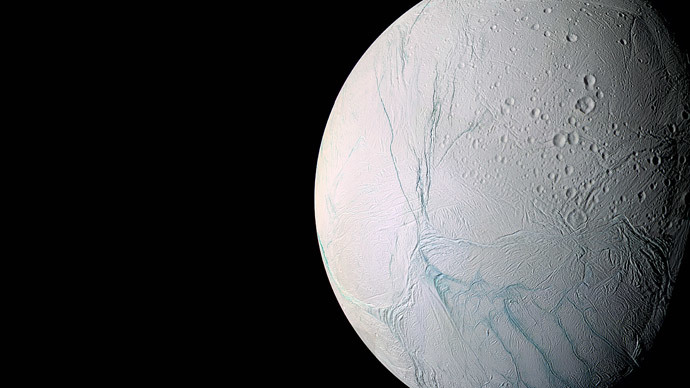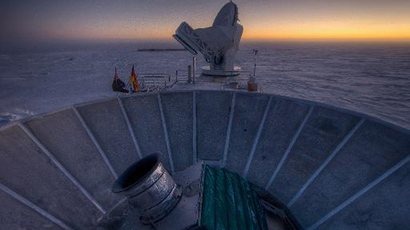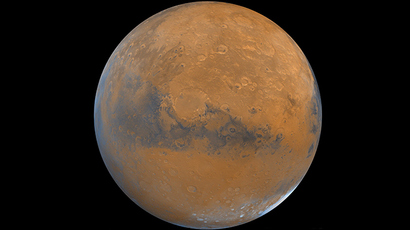Large sea found deep under ice on Saturn moon

A joint NASA-European spacecraft has uncovered a sea deep under the icy surface of Saturn’s moon Enceladus, scientists announced Thursday.
Italian and American researchers said the discovery was made possible with the use of Cassini, a space probe exploring Saturn and its rings 17 years after its launch from Cape Canaveral, Florida.
The body of water is centered at the southern pole of Enceladus, AP reported. The sea is at least as big as North America’s Lake Superior, and may encompass nearly the entire surface of Enceladus, which is about 499 km (310 miles) across.
Yet researchers said the data does not show whether the sea extends to the moon’s north pole.
At the very least, the body of water is a regional sea about 40 km (25 miles) deep, found above a rocky core and under kilometers-thick ice that sits on the moon’s surface.

Cassini’s basic capabilities mean it cannot verify whether any life exists in the water. Nevertheless, researchers say the water holds promise for new life-form discoveries.
The ocean on Enceladus is "a very attractive potential place to look for life," said Cornell University planetary scientist Jonathan Lunine, a researcher with the project.
Clues that there was a body of water on Enceladus first came in 2005, when Cassini detected a plume of salty water vapor and ice from cracks in the moon’s south pole region. Scientists believed those findings could indicate a subsurface sea.
Cassini’s Doppler data – gleaned from three flyovers from 2010 to 2012 – suggested dense material, most likely liquid water, under the surface of the moon’s south pole.
The announcement on Thursday confirms those beliefs. The findings have been published in the journal Science.
"It's extraordinary what Cassini has been able to do for this small moon," California Institute of Technology's David Stevenson, a researcher for the project, said this week. But "this is not like mapping the surface of the Earth or mapping the surface of the moon, it's nothing like that. It's much cruder, and it's amazing that we've been able to do as much as we can."
Enceladus isn’t the only moon in the solar system to harbor a subsurface sea. Titan, one of Saturn’s 60-plus moons, is believed to have a global ocean. There is evidence of seas on the Jupiter moons of Callisto, Ganymede, and Europa.
Cassini is due for three more flyovers of Enceladus before its mission ends in 2017.














